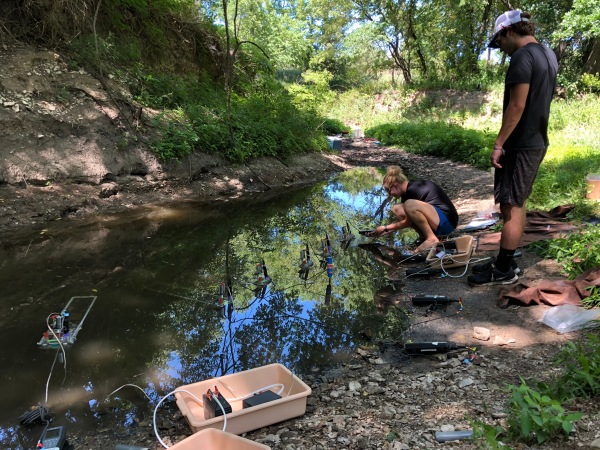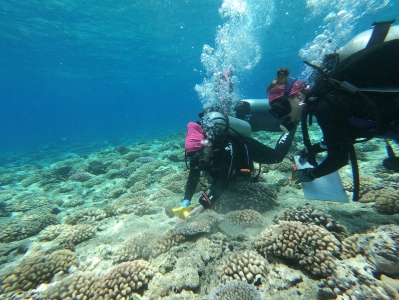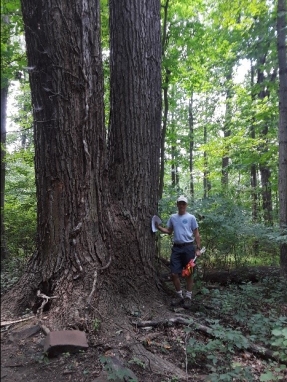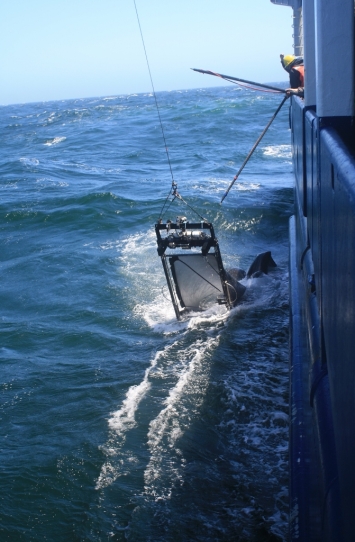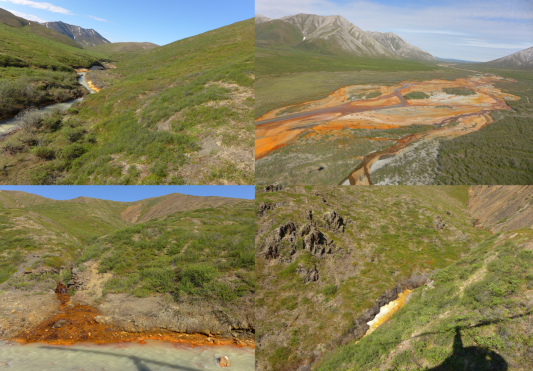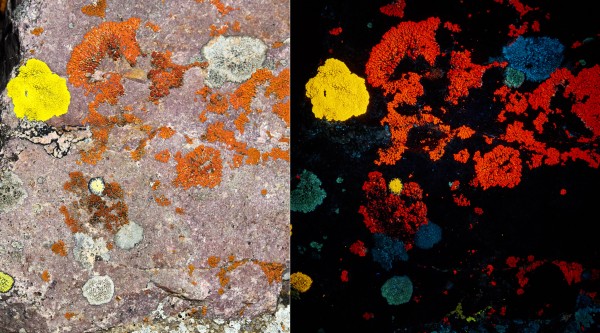Our SSALTER Blog is as vibrant as ever—we have new posts from dozens of sites and many more in the works. We migrated the blog to lternet.edu/SSALTER to bring this LTER initiative closer to home. Check it out!
Hung out to dry: conducting ecological research in grassland streams during a historic drought
by Molly Fisher and James Guinnip (Konza Prairie Biological Station) In the spring of 2018, I began to seek out summer research opportunities during my sophomore year as an undergraduate at Simpson College. Simpson College, a small, private college located in south-central Iowa, had fostered my initial interest in ecological research and water sources found... Continue Reading →
Understanding Coral Bleaching: Research and Lessons from Mo’orea
by Jannine Chamorro, Moorea Coral Reef LTER Last September I had the opportunity to participate in a project studying coral bleaching in Mo’orea, French Polynesia. This was the first time I had ever worked in a remote field location. While initially the thought of flying to a place I could not see on a map... Continue Reading →
A walk in the woods – 17 years later
by Ian Yesilonis (Baltimore Ecosystem Study LTER) Walking through the woods and observing the trees and animals is something I have always loved to do growing up in Baltimore. Our temperate deciduous forests in the city are typically smaller patches; however, one park, the Gwynns Falls/Leakin Park (1,216 acres), is quite large and also has big... Continue Reading →
Cruising the Ocean off California: Wrangling the MOCNESS monster
by Laura Lilly (CCE-LTER grad student rep) In August, the California Current Ecosystem (CCE) LTER program undertook a 32-day Process Cruise to sample the ocean off California. We left San Diego Harbor under sunny skies and smooth sailing conditions and headed north toward Monterey, California. The goal of our month long cruise was to track... Continue Reading →
Roadblocks and Rocks: How to Measure Soils in Forest Ecosystems
by Karla Jarecke and Adrian Gallo (HJ Andrews Experimental Forest) Fig.1 Dave Frey scouts location for a quantitative soil pit in Watershed 2 by taking a tree core in one of the younger trees in the old growth stand to date the age of the most recent landslide. Photo credit: Adrian GalloStanding in a meter... Continue Reading →
Ironing out the arctic carbon cycle
by Adrianna Trusiak Location: Toolik Field Station, Alaskan Arctic Red and orange across the Arctic In the environment iron is easy to identify due to its color. Specifically, on the surface iron is exposed to oxygen in the atmosphere and oxidized, forming red-orange precipitates visible to the naked eye. Across the arctic landscape, these red-orange... Continue Reading →
Illustrating three unexpected lessons we learned whilst studying diurnal patterns of light transmittance of leaves
by Santa Neimane (University of Helsinki & University of Latvia) Location: 02(b) Alps, France Before we go ahead with the countdown of the new insights that we learned, but didn’t expect, first let me introduce you to the research project. We wanted to determine which part of the light spectrum is used as a cue... Continue Reading →
Southwest Regional Student Meetup – Grasslands, Deserts, and Cities
by Megan Wheeler, Brian Kim, and Alesia Hallmark Last October at the LTER All Scientists’ Meeting in Monterey, California the graduate student committee identified between-site relationships as a key component of our mission statement. Building on the momentum from the October meeting, graduate students from the Sevilleta and Jornada Basin LTERs joined the CAP LTER... Continue Reading →
Understanding species’ responses to climate change
This month Cliff will be sharing some of his dissertation work from his beloved alpine field site at the Niwot Ridge LTER site in the Colorado Rocky Mountains.
